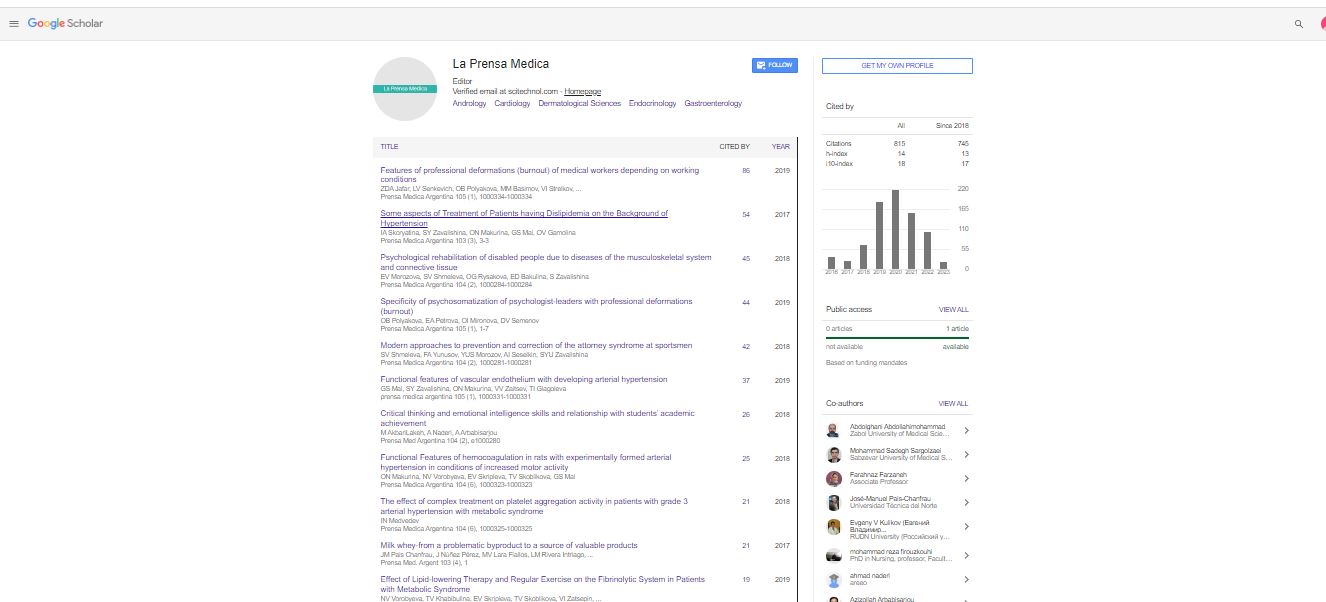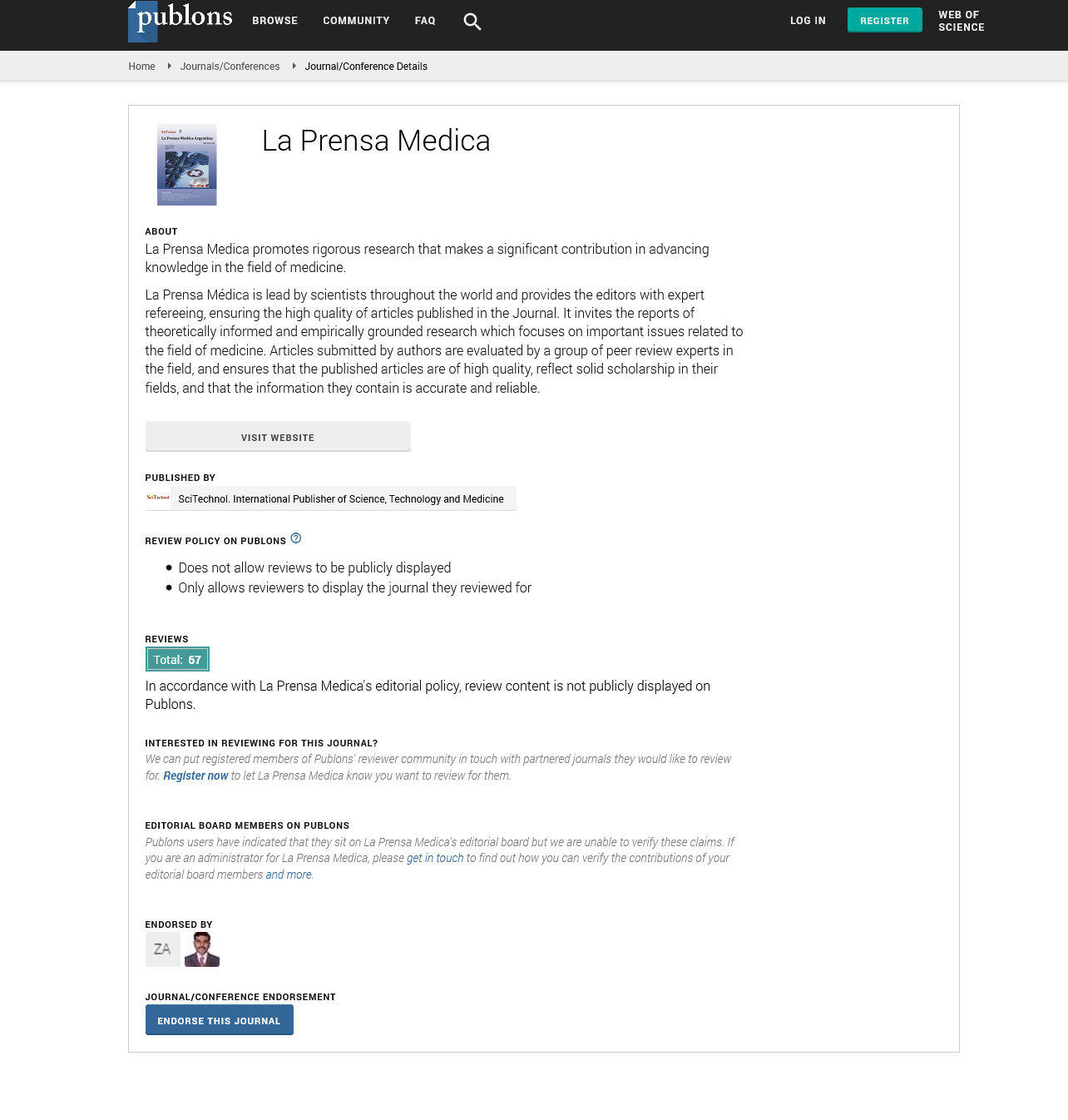Opinion Article, La Prensa Medica Vol: 109 Issue: 3
Non-Invasive Imaging Innovations in Cardiology
Julia Girard*
Department of Cardiology, University of Paris, Paris, France
*Corresponding Author: Julia Girard
Department of Cardiology, University of
Paris, Paris, France
E-mail: girad78@live.fr
Received date: 29 May, 2023, Manuscript No. LPMA-23-107001;
Editor assigned date: 31 May, 2023, PreQC No. LPMA-23-107001(PQ);
Reviewed date: 15 May, 2023, QC No. LPMA-23-107001;
Revised date: 22 June, 2023, Manuscript No. LPMA-23-107001(R);
Published date: 29 June, 2023, DOI: 10.4172/0032-745X.1000165
Citation: Girard J (2023) Non-Invasive Imaging Innovations in Cardiology. La Prensa Medica 109:3.
Abstract
Description
Non-invasive imaging techniques have transformed the field of cardiology, providing valuable insights into cardiovascular anatomy, function, and pathology without the need for invasive procedures. These imaging modalities have revolutionized the diagnosis, risk stratification, and management of cardiovascular diseases. This article explores the recent advancements in non-invasive imaging techniques, including echocardiography, Cardiac Magnetic Resonance imaging (MRI), Computed Tomography (CT), and nuclear imaging, and their utility in cardiovascular disease diagnosis and management.
Echocardiography
Echocardiography, utilizing ultrasound waves, is a widely used non-invasive imaging technique that provides real-time visualization of the heart's structure and function. Technological advancements, such as 3D and strain imaging, have enhanced its diagnostic capabilities. Three-dimensional echocardiography enables detailed assessment of cardiac chambers, valves, and myocardial function, providing more accurate measurements and improving surgical planning. Strain imaging measures myocardial deformation, offering valuable information about myocardial contractility and early detection of cardiac dysfunction.
Cardiac Magnetic Resonance Imaging (MRI)
Cardiac MRI is a powerful non-invasive imaging modality that provides high-resolution images of the heart, allowing for detailed evaluation of cardiac structure, function, and tissue characterization. Recent advancements in cardiac MRI techniques have expanded its clinical applications. Cardiac cine MRI provides detailed information about myocardial function, allowing for accurate assessment of ventricular volumes, ejection fraction, and regional wall motion abnormalities. Additionally, cardiac MRI can assess myocardial tissue composition, detecting areas of fibrosis or inflammation, which is necessary for the diagnosis and risk stratification of conditions such as myocarditis and cardiomyopathies.
Computed Tomography (CT)
Computed Tomography (CT) imaging has undergone significant advancements, enabling detailed visualization of the cardiovascular system. Coronary Tomography Angiography (CTA) is a non-invasive technique that provides detailed images of the coronary arteries, allowing for the detection of Coronary Artery Disease (CAD) and assessment of plaque burden. Recent developments, such as the use of high-definition CT scanners and advanced image reconstruction algorithms, have improved the spatial resolution and diagnostic accuracy of coronary CTA. CT has also proven valuable in assessing structural heart diseases, such as congenital heart defects and aortic pathologies, offering precise anatomical information for treatment planning.
Nuclear imaging
Nuclear imaging techniques, including Single-Photon Emission Computed Tomography (SPECT) and Positron Emission Tomography (PET), have been essential in the diagnosis and risk stratification of various cardiovascular conditions. Myocardial perfusion imaging with Single-Photon Emission Computed Tomography (SPECT) provides valuable information about myocardial blood flow and ischemia detection, aiding in the diagnosis and risk stratification of patients with known or suspected coronary artery disease. PET imaging, combined with specific radiotracers, allows for the assessment of myocardial viability, myocardial metabolism, and inflammation. This information is important for determining the prognosis and guiding therapeutic decisions in conditions such as myocardial infarction and inflammatory cardiomyopathies.
Clinical Applications and Management Impact
The advancements in non-invasive imaging techniques have had a significant impact on the diagnosis and management of cardiovascular diseases. These imaging modalities have improved the accuracy and early detection of conditions such as CAD, valvular heart disease, heart failure, and congenital heart defects. They provide essential information for risk stratification, treatment planning, and monitoring therapeutic response. For example, the precise assessment of ventricular function and myocardial viability with cardiac MRI has influenced decisions regarding revascularization and device therapy in patients with heart failure and ischemic heart disease. Moreover, non-invasive imaging techniques have contributed to the emergence of precision medicine in cardiology. Personalized approaches to treatment and risk assessment have been facilitated by the ability to identify specific anatomical and functional abnormalities, assess disease severity, and select appropriate therapies. For instance, the characterization of vulnerable coronary plaques through coronary CTA has enabled targeted interventions and reduced unnecessary invasive procedures. Additionally, the identification of myocardial fibrosis or inflammation with cardiac MRI has guided the use of immunosuppressive therapies in patients with inflammatory cardiomyopathies.
Conclusion
Advancements in non-invasive imaging techniques have revolutionized the diagnosis and management of cardiovascular diseases. Echocardiography, cardiac MRI, CT, and nuclear imaging play important roles in evaluating cardiac structure, function, and tissue characteristics. These modalities have significantly impacted clinical decision-making, risk stratification, and treatment planning. With ongoing technological advancements, non-invasive imaging will continue to evolve, further enhancing its role in precision cardiology and improving patient outcomes.
 Spanish
Spanish  Chinese
Chinese  Russian
Russian  German
German  French
French  Japanese
Japanese  Portuguese
Portuguese  Hindi
Hindi 

